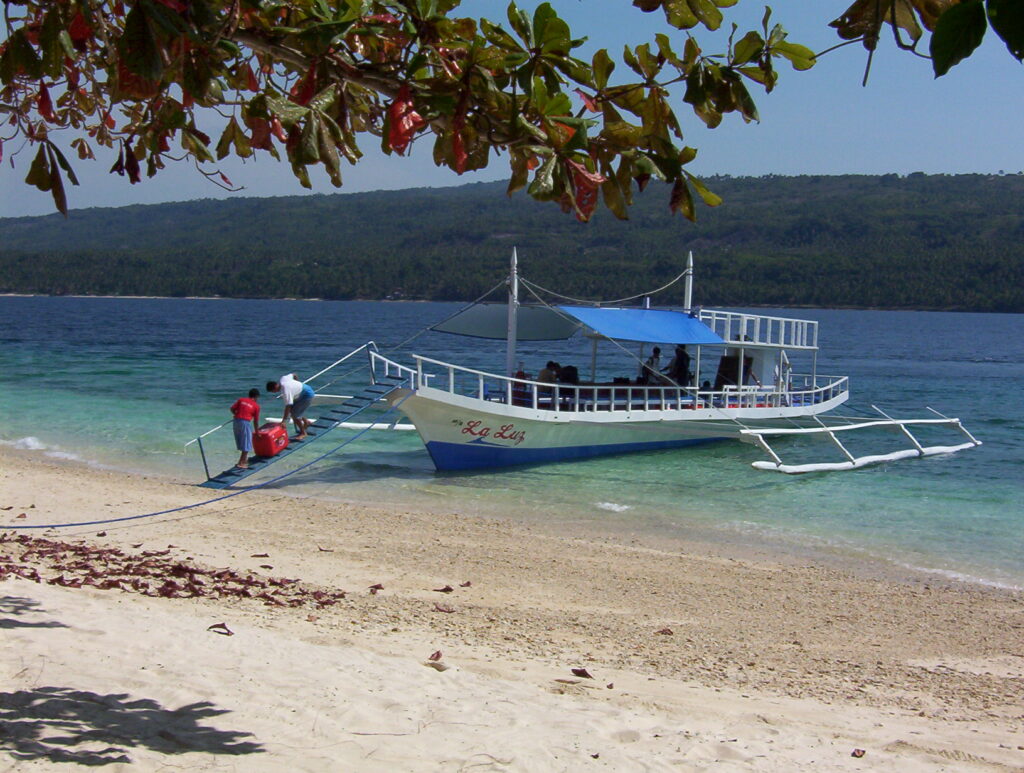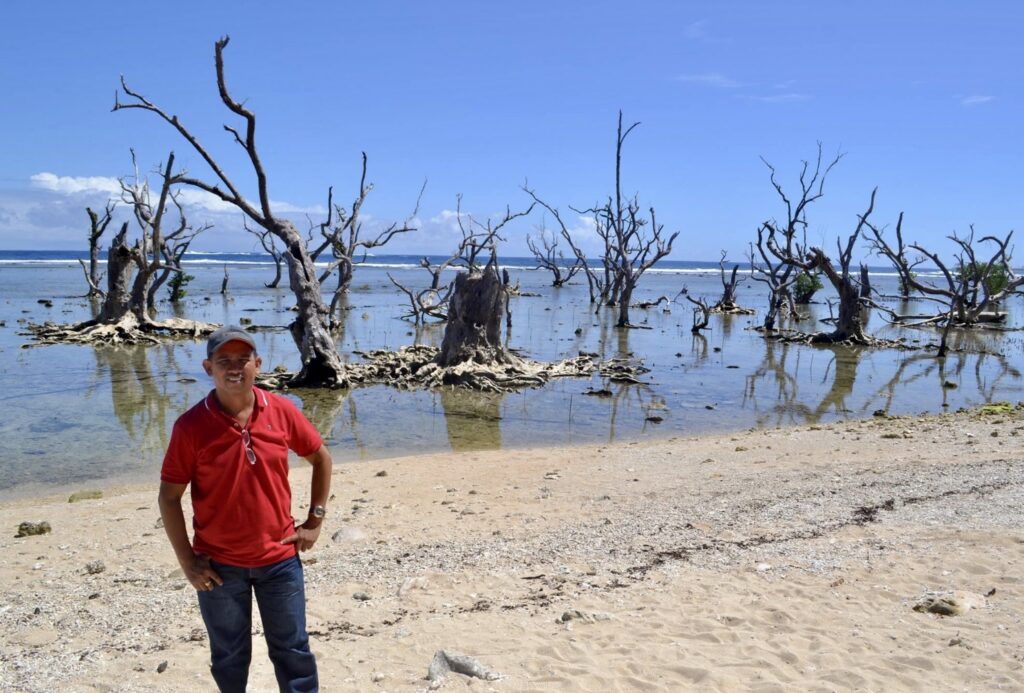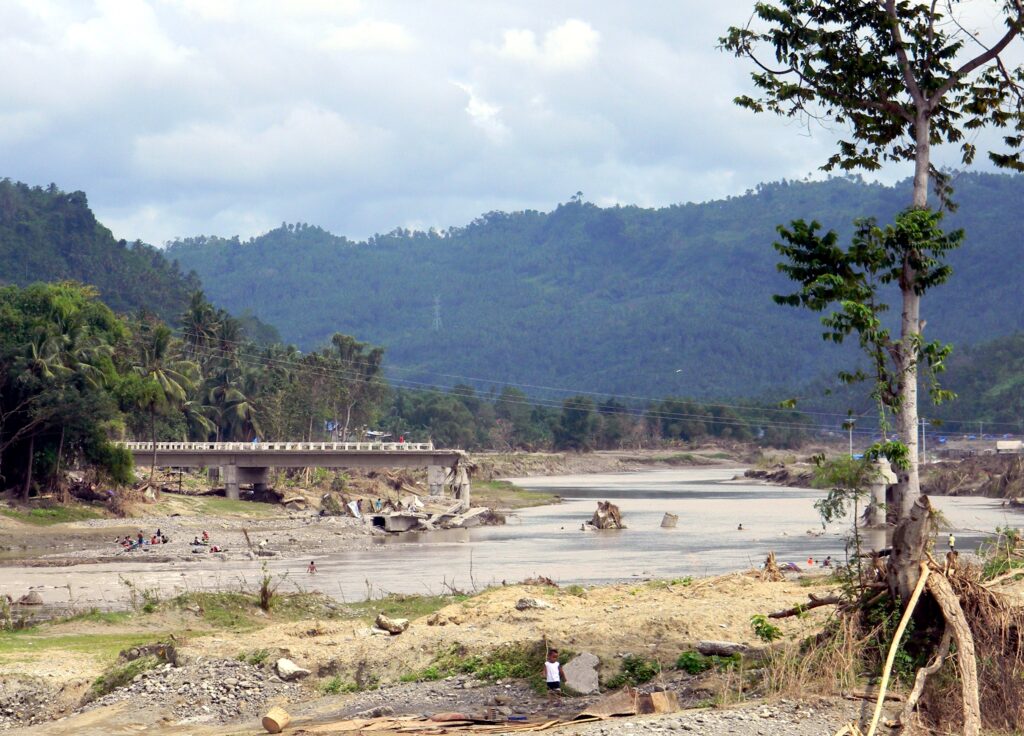Text and Photos by Henrylito D. Tacio
Up to 20 typhoons normally pass the Philippines Area of Responsibility. In recent years, stronger typhoons have become more frequent. Sendong, Pablo, Yolanda, and Odette – to name a few.
Some scientists claim that the culprit for these stronger typhoons is global warming caused by climate change. “By the end of this century, tropical cyclones are expected to intensify, with a projected increase in the average instantaneous maximum wind velocity at the Philippine coast,” said the executive report of a recent World Bank publication, Getting A Grip on Climate Change in the Philippines.
The Global Climate Risk Index 2015 listed the Philippines as the number one most affected country by climate change.
“This is in part to its geography,” wrote the EcoWatch in its website. “The Philippines is located in the western Pacific Ocean, surrounded by naturally warm waters that will likely get even warmer as average sea-surface temperature continues to rise.”
With over 7,500 islands and situated in the so-called Ring of Fire, the Philippines has to bear the brunt of climate change. As early as 2010, a mapping assessment was carried out for each of the country’s provinces.
“Sixteen provinces of the Philippines ranked among the top 50 most vulnerable in Southeast Asia,” reports Hotspots! Mapping Climate Change Vulnerability in Southeast Asia. “High exposure to climate hazards, especially tropical cyclones, floods and landslides, is the dominant factor behind the vulnerability of these provinces.”
Climate change, caused by increasing emissions of greenhouse gasses, particularly carbon dioxide, is causing the average temperature of the Earth’s atmosphere to increase. As the air temperature rises, oceans absorb some of this heat and become warmer.
There is no turning back when it comes to climate change. Some skeptics may dismiss it as unreal, but it is already happening. In 2008, during the 11th International Coral Reef Symposium (ICRS) held in Fort Lauderdale, Florida, Dr. Simon Donner of the University of British Columbia embarked on a metaphor for climate change.
“The climate is like this big ship. We are all on this big ship and the problem is once you hit the brakes it takes a long time for the ship to actually slow down and stop,” Dr. Donner told the participants.
“In our case the ship is the Titanic and we are going to hit the iceberg. It is going to be almost impossible for us not to hit the iceberg at this point. What we need to do is everything we can to put the brakes on, to slow the ship down and move the iceberg a little bit. The time for emission reductions isn’t as much now as it was 20 years ago.”
To think, the Philippines is a minor contributor to global warming. The World Bank report said that the country ranks 43rd in terms of global greenhouse gas emissions and 112th in terms of emissions intensity.
But the country has to bear the consequences of the weather gone crazy. Take the case of food production. “Despite the technological advances in the second half of the 20th century, agriculture remains to be one of the most vulnerable sectors to climate change,” notes Apple Jean C. Martin in policy advocacy.

Beaches will be inundated 
Mangroves destroyed by typhoon Pablo 
Aftermath of Typhoon Sendng
“Climate change is more disastrous to the agricultural industry of the Philippines and its neighboring countries than in other parts of the world,” warned Dr. David Street of the US Argonne National Laboratory.
According to agriculture scientist Julian Gonsalves, agriculture and climate change are closely linked. “The agriculture sector is expected to suffer the most serious impacts of climate change, and food security, nutrition and livelihoods will be affected if we don’t act soon,” he told SciDev.Net.
When it comes to agriculture, water is very important. But water resources are also vulnerable to climate change. “In a warmer world, we will need more water – to drink and to irrigate crops,” said the London-based Panos Institute.
“The link between water and food is strong,” says Lester R. Brown, president of Earth Policy Institute, based in Washington, D.C. “We drink, in one form or another, nearly 4 liters of water per day. But the food we consume each day requires at least 2,000 liters to produce, 500 times as much.”
This explains why 70% of all water use is for irrigation. An estimated 40% of agricultural products and 60% of the world’s grain are grown on irrigated land. “Agriculture is by far the biggest consumer of water worldwide,” the International Rice Research Institute (IRRI) said. For instance, to raise a ton of rice, you need a thousand gallons of water.
Rice and fish are the staple food of Filipinos. It is alarming that fish caught from the oceans are also affected by the warming of the waters. A study released by the Worldwide Fund for Nature in 2015 considered climate change as “one of the main reasons for the decline of marine species in the last 30 years.”
“Climate change is already having a profound effect on life in the oceans,” the US National Oceanic and Atmospheric Administration (NOAA) says. “Marine species tend to be highly mobile, and many are moving quickly toward the poles to stay cool as the average ocean temperature rises.”
In the Philippines, an estimated 10-15 percent of the total fisheries come from coral reefs. About 80-90 percent of the income of small island communities comes from fisheries. “Coral reef fish yields range from 20 to 25 metric tons per square kilometer per year for healthy reefs,” says Dr. Angel C. Alcala, the former environment secretary.
Less fish is bad news for Filipinos as they are among the world’s biggest fish consumers. After all, fish provides more than half of the protein requirement of people. Each year, a Filipino consumes almost 30 kilograms of seafood.
“We still have enough fish now but with global warming we may have problems in the next five to ten years unless we do something about it,” warns Dr. Rafael D. Guerrero III, a fishery expert, and an academician at the National Academy of Science and Technology.

